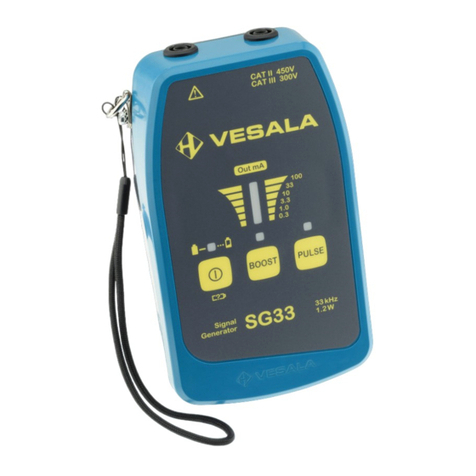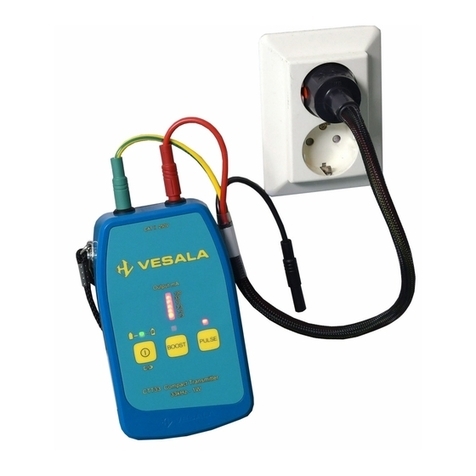
9 TM30 User Manual v. X1.0
5. Using the receiver
5.1 General
TMR30 starts when Power button is pressed until a beep sound is heard. Level bar will
display battery level while start up; the higher LED bar, the higher is battery voltage.
If Power button is pressed briefly during use, the work light under the nose turns on
and Level bar displays battery level just like during start up. Work light turns off by
pressing Power button again or by shutting down the device.
TMR30 Receiver has six operating modes, which
have been divided into two categories: Trace
modes are to be used for receiving signals
generated by the TMT30 transmitter. Monitor
modes are used for monitoring signals other than
generated by the transmitter.
Device always starts to the same mode that was used the previous time and one of
MODE LEDs will display which mode is active. MODE up & down buttons are used to
change mode.
Device will automatically switch off after 20 minutes, unless buttons are pressed in the
mean time. To prevent the automatic switch off, press the Power button for 2 seconds
during start up until a ti-ti sound is heard.
5.2 Antennas and choosing right mode
There are three integrated antennas inside the TMR30 nose
section and device automatically chooses one of them
according to the user selected mode:
-Capacitive antenna is right at the tip of the nose
where it has best possible accuracy.
-Inductive close range probe is located under the small
grooves seen on the top and bottom of the nose. The
grooves point the most sensitive spot of the antenna.
-Inductive rod probe is located in the middle of the
nose and its most sensitive direction is the same as
the nose direction.
Trace modes – Choose one of these three modes according to the target object:
-Open wires (capacitive antenna): For wire pairs and other uncovered conductive
objects when distance is <20cm.
-Near cable (close range probe): For wires and cables when distance is <40cm.
-Cable route (rod probe): For tracing conductive objects inside walls or tracing
underground cables.
Monitor modes – Choose one of these three modes according to the target object:
-Powerline: For tracing and locating live mains wires and cables inside walls etc.
-Audio freq: For listening audio frequencies e.g. on wires or close to electrical
appliances.
-High freq: For monitoring high frequencies such as DSL, PCM etc.
All Monitor modes use the capacitive antenna.






























